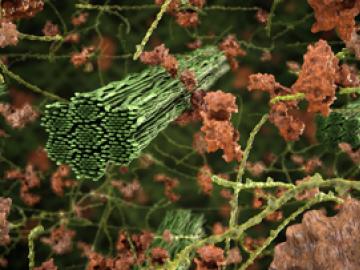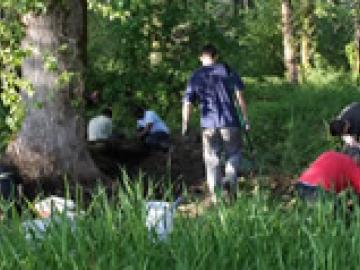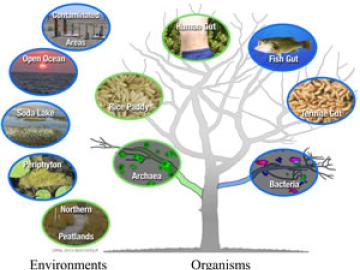Filter News
Area of Research
- (-) Biological Systems (5)
- (-) National Security (2)
- Advanced Manufacturing (1)
- Clean Energy (13)
- Climate and Environmental Systems (1)
- Computational Biology (2)
- Computer Science (1)
- Energy Sciences (3)
- Fusion and Fission (1)
- Isotopes (1)
- Materials (9)
- Neutron Science (3)
- Supercomputing (10)
- Transportation Systems (2)
News Type
News Topics
Media Contacts
ORNL drone and geospatial team becomes first to map the Coca River in the Amazon basin as erosion and sediment threaten Ecuador’s lands.

Jack Orebaugh, a forensic anthropology major at the University of Tennessee, Knoxville, has a big heart for families with missing loved ones. When someone disappears in an area of dense vegetation, search and recovery efforts can be difficult, especially when a missing person’s last location is unknown. Recognizing the agony of not knowing what happened to a family or friend, Orebaugh decided to use his internship at the Department of Energy’s Oak Ridge National Laboratory to find better ways to search for lost and deceased people using cameras and drones.

The associate laboratory director for Energy and Environmental Sciences (EES) at the Department of Energy’s Oak Ridge National Laboratory and two University of Tennessee-ORNL Governor’s Chair researchers are among the newly elected fellows of the American Associa...

ORNL study uses neutron scattering, supercomputing to demystify forces at play in biofuel production
Researchers studying more effective ways to convert woody plant matter into biofuels at the Department of Energy's Oak Ridge National Laboratory have identified fundamental forces that change plant structures during pretreatment processes used in the

The ability to make plants grow stronger and more quickly is a key goal in the effort to develop better biofuels and better understand plant efficiency.

Microbes that live in rice paddies, northern peat bogs and other previously unexpected environments are among the bacteria that can generate highly toxic methylmercury, researchers at Oak Ridge National Laboratory and the Smithsonian Environmental Research Center have learned.

More forms of mercury can be converted to deadly methylmercury than previously thought, according to a study published Sunday in Nature Geoscience.




